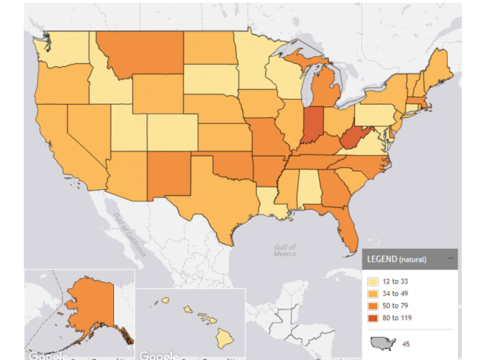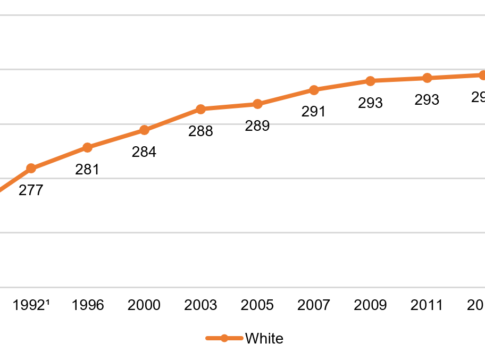Summers past have brought us front-page firestorms and inane back-to-school stories. But this August might one day be famous for marking the start of a fresh round of honest conversation about the achievement gap—and the relationship between race, poverty and our schools.
For too long these topics have been bogged down by pious assertions and sacrosanct positions, held firmly by combatants on either side of the education policy divide. For “reformers” it’s an article of faith that closing the achievement gap is job number-one—and that highly-effective schools can make a big dent in the gap—maybe even close it entirely—all by themselves. Meanwhile, defenders of the current system view all this talk about the achievement gap with suspicion—asserting, as they do, that schooling is hopelessly intertwined with conditions in the family and community, and thus that we can’t expect results to improve much until we alleviate poverty and racism.
If we lay down our swords and start fresh with a “beginner’s mind,” we can acknowledge that there’s plenty of truth in both positions. Schools do matter a lot, and more than a few exist that have achieved phenomenal results for poor and minority students. (Many, many others take our neediest students and give them the bare minimum—in terms of challenging work, inspirational teachers, and on and on.) Yet we should also concede that intact families, communities with strong social capital, and households with plentiful resources for good health care, healthy meals, enrichment programs, and the like give affluent children an advantage that most of their poor peers will never be able to overcome. Can’t people speak such truths without being accused of giving “excuses” or practicing “the soft bigotry of low expectations”?
With that context in mind, consider two recent milestones in the achievement gap conversation: First, the news that the gap in New York City didn’t narrow nearly as much as had previously been reported. And second, the publication of an ETS paper by Paul Barton and Richard Coley, The Black-White Achievement Gap: When Progress Stopped.
The New York situation might have forever punctured the view that tracking achievement gaps is a useful exercise for gauging the progress of an urban school district. The short story is that Mayor Bloomberg and Chancellor Klein crowed for years about dramatic declines in the gap among white and black students reaching the “proficient” mark—declines that mostly disappeared when New York State recently recalibrated its definition of “proficiency.” This is simply a matter of mathematics. Because of vast differences in average group performance between whites and blacks (the way we usually conceive of the gap), where the proficiency bar is set will determine the size of the “proficiency gap.” Set it high and the gap will be large, because most white students will clear it and most black students won’t. Set it low and the gap will shrink; the white kids are still over the bar but now lots more black kids will exceed it, too.
A similar dynamic played out in Washington, where test scores dropped across the board last year, possibly because the tests inadvertently got harder. Harder tests mean higher proficiency bars—and poof, fewer blacks reached the bar, and the achievement gap grew larger. (This is now a big issue in the current mayoral race.)
Jay Mathews of the Washington Post rightfully calls the achievement gap into question, for these and other reasons. Simply stated, do we really want to root for white students to do worse over time? That would narrow the achievement gap, but nobody believes such an outcome is good for anybody. (Jonathan Chait makes a similar point.)
And that’s the biggest problem with Barton and Cooley’s ETS report: it obsesses about the gap, rather than simply following the achievement trends for African-American students. If they had done the latter, their study would have been titled Black Student Achievement: Moving Steadily Upward Once Again.
It’s right there on page five of their paper: the average NAEP “scale score” in reading for black 9-year-olds rose from 186 in 1999 to 197 in 2004 to 204 in 2008. It was a similar story in math at both the 9-year-old and 13-year-old levels. And upticks can be detected between 2004 and 2008 in reading at Age 13 and Age 17, and in math at Age 17. In other words, the trends are positive across the board!
What’s even more maddening, though, is that we have no firm understanding of what’s driving these improvements. Barton and Cooley spend most of their time digging into the big gains made by African-American students in the 1970s and 80s—ground well-plowed by Christopher Jencks, Eric Hanushek, and others. They explore various explanations, some having nothing to do with schools (like improvements in black wages and living conditions after the enactment of the Civil Rights Act). Desegregation was almost surely a factor, though nobody knows how much, and Barton and Cooley put forward class-size reduction as the most plausible driving cause. (NCTQ does a nice job debunking that argument here.)
And then the gap-closing (and, importantly, gains for African-American students) stopped suddenly around 1988 or 1990, and stayed flat for about a decade. Was this because desegregation lost steam? Because of the crack cocaine epidemic? Because of the decline of two-parent families in the black community? No one knows for sure.
Barton and Cooley are just as perplexed by the gap-shrinking that took place between 1999 and 2004 (not to mention the African-American progress that continues today). Let me offer some obvious possibilities for these positive developments. We know, from work by Eric Hanushek and Macke Raymond, among others, that the adoption of test-based accountability systems boosted achievement in the late 90s in the early-adopter states. As the other states adopted these systems in the 2000s (under pressure from No Child Left Behind) they saw achievement gains too. Improvements were particularly impressive for the lowest-achieving students, many of whom were African-American. There’s also reason to believe that the adoption of scientifically-based reading instruction is helping (especially in Age 9 reading scores).
But we can’t discount demographic factors either. Maybe we’re benefiting from the end of the crack cocaine epidemic. Perhaps the big economic gains made by blacks in the 1990s didn’t show up in improved test scores until the 2000s. Perhaps the various efforts to create a culture of achievement within the African-American community are finally paying off.
The last time the achievement gap stopped narrowing—back in the late 1980s—it was because black achievement flat-lined or worse. This time the achievement gap stopped narrowing because both white kids and black kids are making steady progress. This is one moment when I’m not wistful for the past.
Will these gains continue? Or will they peter out, as the benefits of accountability, research-based reading, and other reforms hit up against the reality of sky-high child poverty rates and out-of-wedlock births in the black community? Who knows. But we’d be smart to keep our eye on the real goal—improvements for all groups of kids—instead of getting distracted by the gap.





